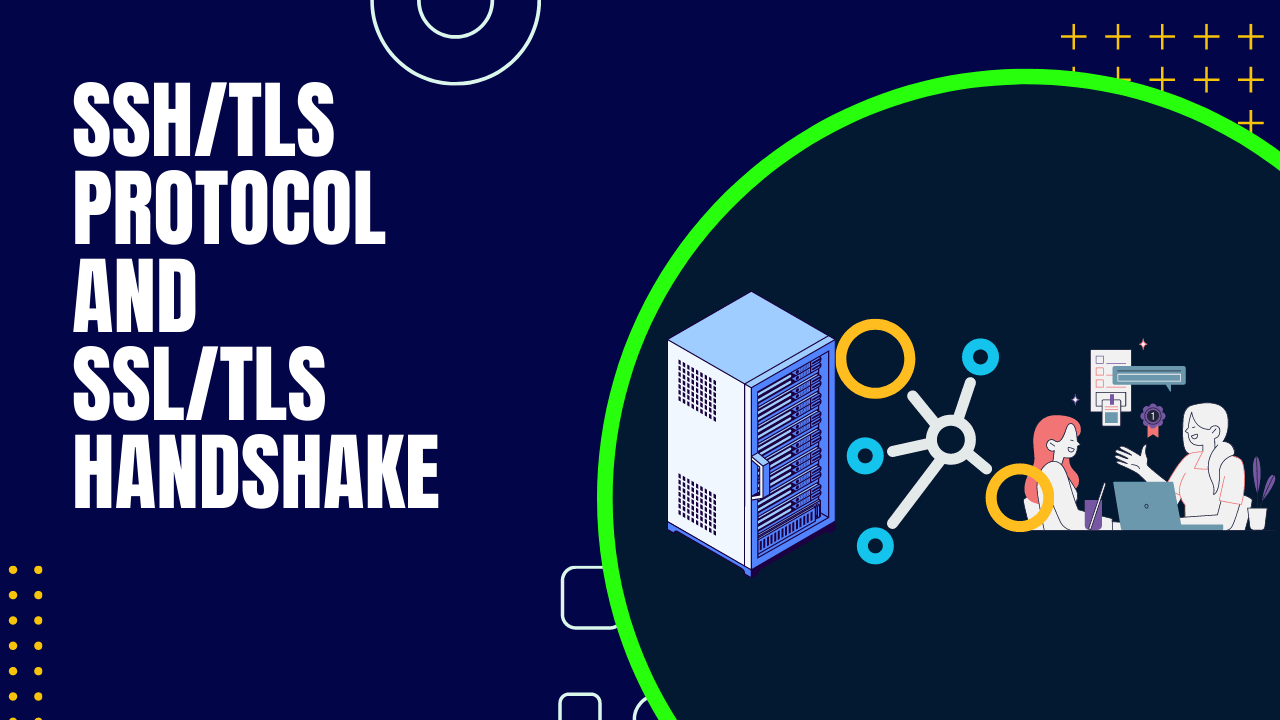In this blog, we will see the third layer of the OSI model, which is the Network Layer. We will see what services are provided by the Network Layer. So let’s get started with the blog.
Table of Contents
- Introduction to Network Layer
- The functions of the Network Layer
- Protocols of the Network Layer
- Recent Articles on Computer Networks
- Recent Blogs on Cyber Security
Introduction to Network Layer
Network Layer is a critical component of the OSI (Open Systems Interconnection) model, which defines a conceptual framework for networking and communication protocols.
Positioned as the third layer in the model, the Network Layer is responsible for the efficient routing of data packets between devices across different networks, regardless of the specific underlying physical network technology.
The primary function of the Network Layer is to manage the logical addressing and routing of data packets from the source device to the destination device, even when those devices are located on separate networks.
It operates at a higher level of abstraction compared to the Data Link Layer (Layer 2) and the Physical Layer (Layer 1), focusing on the network’s topology, addressing schemes, and routing algorithms.
The functions of the Network Layer
These functions are designed to manage the logical addressing, routing, and forwarding of data packets, ensuring that data reaches its intended destination across interconnected networks. Here are the key functions of the Network Layer:
A) Logical Addressing (IP Addressing):
The Network Layer assigns logical addresses, known as IP addresses, to devices on a network. IP addresses are hierarchical and help uniquely identify each device on a network. IPv4 and IPv6 are the two main versions of IP addresses. Logical addressing allows routers to determine the best path for data packets based on destination addresses.
B) Routing:
The Network Layer is responsible for selecting the optimal path for data packets to travel from the source device to the destination device. Routers, operating at this layer, make routing decisions based on routing tables that contain information about network topologies, preferred paths, and destination addresses. Dynamic routing protocols, such as OSPF and BGP, facilitate the exchange of routing information among routers to ensure efficient data delivery.
C) Packet Forwarding:
Routers at the Network Layer perform packet forwarding by examining the destination IP address in a packet’s header. They make decisions about the next hop a packet should take based on the routing information in their routing tables. This process allows data to traverse multiple networks and reach its intended destination.
D) Fragmentation and Reassembly:
The Network Layer handles fragmentation when data packets are too large to be transmitted over certain network segments with smaller Maximum Transmission Units (MTUs). It breaks down large packets into smaller fragments for transmission and reassembles them at the destination to reconstruct the original data packet.
E) Error Detection and Handling:
The Network Layer includes mechanisms to detect errors in packet transmission. While error correction often happens at higher layers, error detection is important for identifying and discarding corrupted packets. The Time-to-Live (TTL) field in the packet header prevents packets from circulating indefinitely and helps manage network congestion.
F) Network Address Translation (NAT):
The Network Layer supports NAT, which allows multiple devices on a local network to share a single public IP address when communicating with external networks. NAT helps conserve public IP addresses and enhances network security by masking internal addresses from external networks.
G) Quality of Service (QoS) Management:
The Network Layer can implement QoS mechanisms to prioritize certain types of traffic over others. This ensures that critical data, such as real-time voice or video, receives the necessary bandwidth and low latency, while less time-sensitive data is handled accordingly.
H) Path Determination and Selection:
The Network Layer determines the optimal path for data packets by considering factors like shortest path, bandwidth availability, network congestion, and link reliability. Routers use various routing algorithms to make informed decisions about the path packets should take.
I) Multicasting and Broadcasting:
The Network Layer supports multicast and broadcast communication. Multicasting allows data to be sent to multiple recipients who have expressed interest in receiving it, while broadcasting sends data to all devices within a specific network segment.
In summary, the Network Layer acts as the bridge between different networks, ensuring data’s reliable transmission through logical addressing, routing, and forwarding mechanisms. Its functions are vital for building and maintaining interconnected networks that facilitate global communication and information exchange.
Protocols of the Network Layer
Here are some important protocols associated with the Network Layer:
A) Internet Protocol (IP):
IP is the cornerstone protocol of the Network Layer. It provides logical addressing in the form of IP addresses (IPv4 and IPv6) and enables the routing and forwarding of data packets between devices on different networks. IP includes functionalities for fragmentation and reassembly of packets and error handling.
B) Internet Control Message Protocol (ICMP):
ICMP is used for reporting errors and exchanging control messages between devices within an IP network. It is essential for diagnosing network connectivity issues and providing feedback on network conditions.
C) Internet Group Management Protocol (IGMP):
IGMP is employed in IP networks to manage multicast group memberships. It allows devices to request and manage membership in multicast groups and facilitates the delivery of multicast traffic.
D) Open Shortest Path First (OSPF):
OSPF is a link-state routing protocol that calculates the shortest path between devices based on network topology. It’s particularly useful in larger networks and supports different metrics for route selection.
E) Border Gateway Protocol (BGP):
BGP is a path vector protocol that operates between autonomous systems (ASes) in the context of the global Internet. It determines the best path for data to traverse between ASes and is critical for maintaining global routing tables.
F) Internet Protocol Security (IPsec):
IPsec provides secure communication over IP networks by adding encryption and authentication to IP packets. It operates at the Network Layer, ensuring data confidentiality and integrity.
These protocols, among others, illustrate the diversity and complexity of the Network Layer’s functionalities. They collectively support the core tasks of logical addressing, routing, and forwarding, contributing to the seamless connectivity of devices and networks on a global scale.
Recent Articles on Computer Networks
- Introduction to Computer Networking | What is Computer Network
- What are Topology & Types of Topology in Computer Network
- What is FootPrinting in Cyber Security and its Types, Purpose
- Introduction to Cloud Computing | What is Cloud Computing
- Distributed Shared Memory and its advantages and Disadvantages
- What is VPN? How doe VPN Work? What VPN should I use?
- What is an Internet and How the Internet Works
- What is a Website and How Does a Website or web work?
- Introduction to Virus and different types of Viruses in Computer
- What is TCP and its Types and What is TCP three-way Handshake
- What is UDP Protocol? How does it work and what are its advantages?
- What is an IP and its Functions, What is IPv4 and IPv6 Address
- What is MAC Address and its Types and Difference MAC vs IP
- What is ARP and its Types? How Does it Work and ARP Format
- Sessions and Cookies and the Difference Between Them
- What is ICMP Protocol and its Message Format?
- What is Big Data? Characteristics and Types of Big Data
- Disciplines of CyberSecurity | What are the goals of CyberSecurity?
- What is Firewall, Features, Types and How does the Firewall Work?
- Network Scanning, Types, and Stealth Scan in Computer Network
- Cryptography and its Types in Ethical Hacking
- Tor Browser and How does it Work | Onion Router Tutorial
- Proxy Server, Advantages, Difference between Proxy Server & VPN
- DHCP Protocol and What Are the Pros and Cons of DHCP
- Intrusion Detection System(IDS) and What are the types of IDS
- Domain Name Server, How Does It Work, and its advantages
- Telnet: Introduction, How Does it Work, and Its Pros and Cons
- SOC: Introduction, Functions performed by SOC, and its Pros
- What is SIEM? | What is the Difference between SIEM and SOC?
- Application Layer in OSI Model | OSI Model Application Layer
- What is SSL Protocol or SSL/TLS and SSL Handshake, and Architecture of SSL
Recent Blogs on Cyber Security
- What is Ethical Hacking || Introduction to Ethical Hacking
- System Security and Protection in Cybersecurity
- HIPAA (Health Insurance Portability and Accountability Act) in Cyber Security Law
- PCI DSS (Physical Card Industry and Data Security Standard) in Cyber Security Law
- What is GLBA (Gramm-Leach-Bliley Act) in Cyber Security Law?
- What is NIST (National Institute of Standards and Technology)?
- What is GDPR (General Data Protection Regulation)?
- What are ISO 27001 and CIA in Cyber Security Law?
- What is HITRUST Framework in Cyber Security Law




